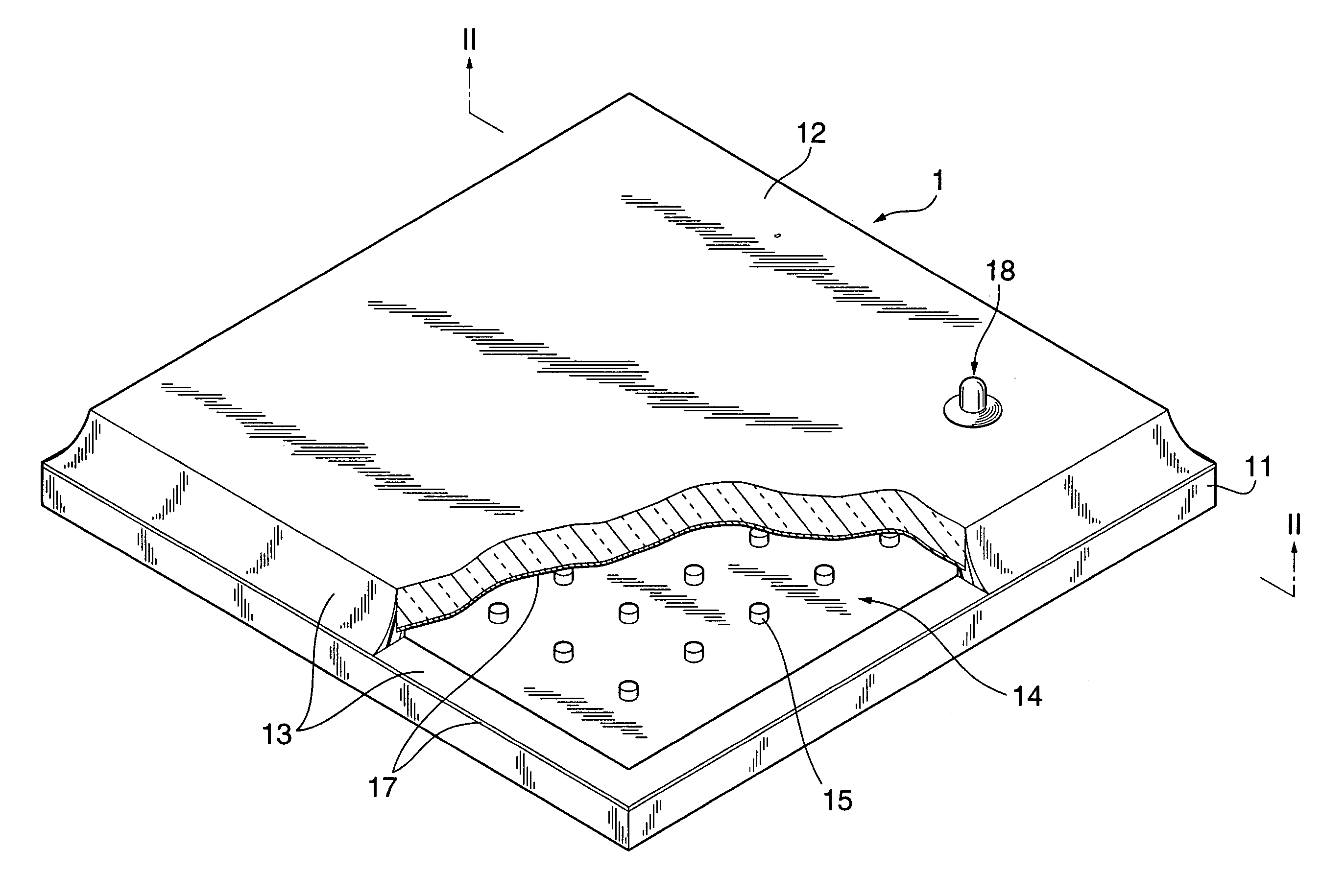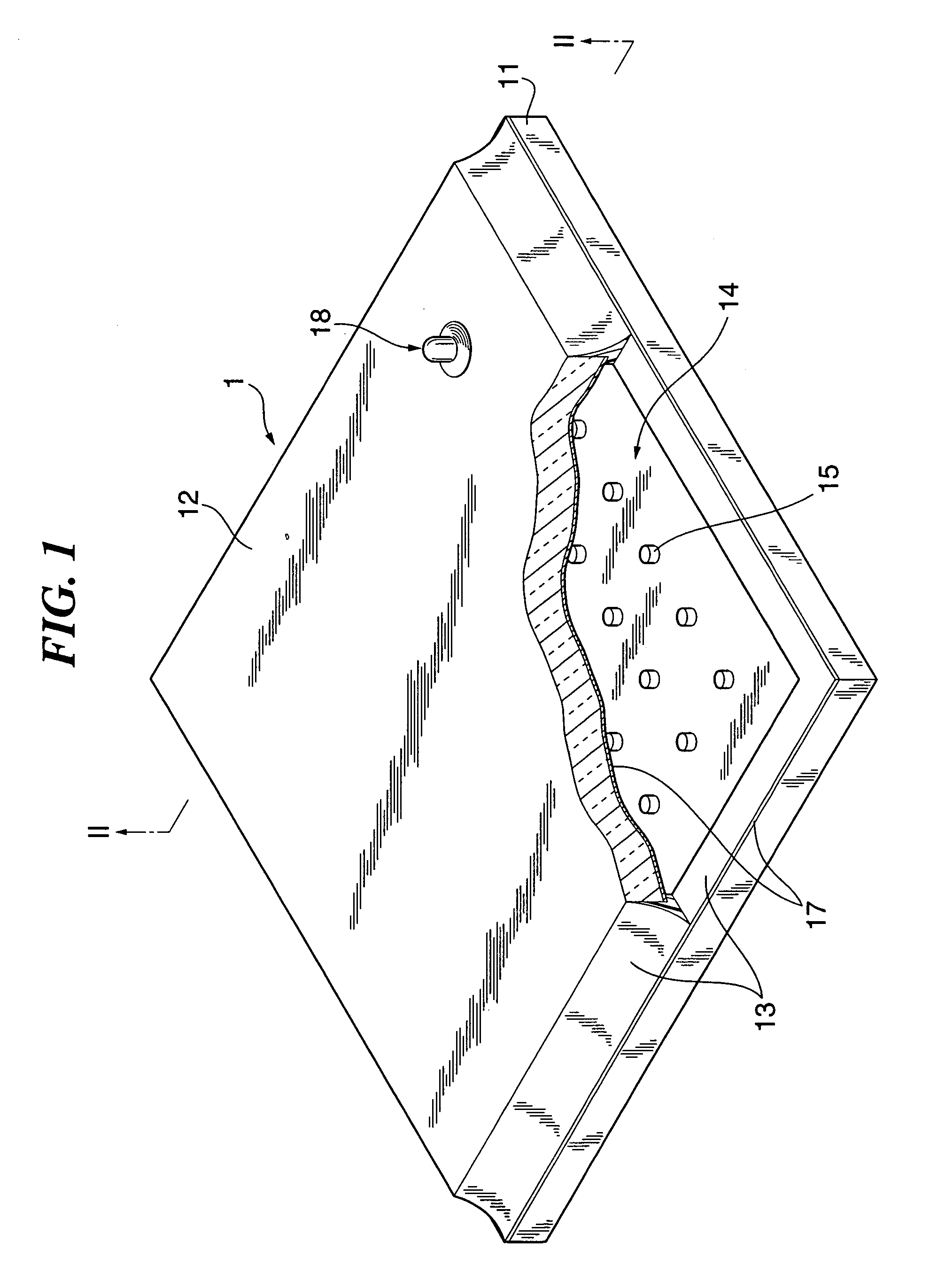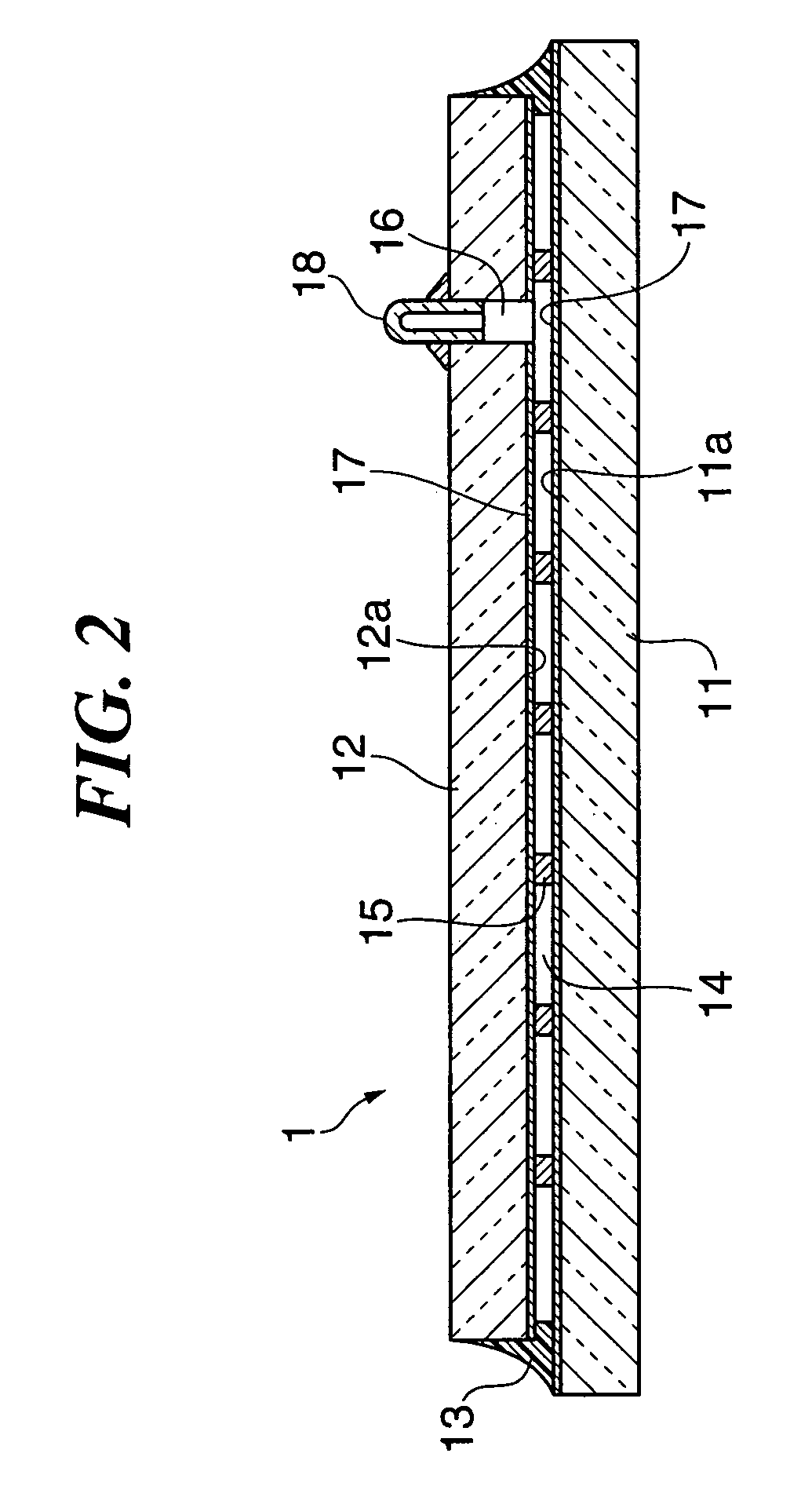Light-transmitting glass panel
a technology of light-transmitting glass and glass panels, which is applied in the direction of parallel plane units, special doors/window arrangements, doors/windows, etc., can solve the problems of reducing the heat transmission part due to radiation, reducing the transmittivity, and no longer displaying the inherent light-transmitting ability. , to achieve the effect of high thermal insulation performan
- Summary
- Abstract
- Description
- Claims
- Application Information
AI Technical Summary
Benefits of technology
Problems solved by technology
Method used
Image
Examples
Embodiment Construction
[0032]Embodiments of the present invention will now be described with reference to the drawings.
[0033]FIG. 1 is a perspective view of a light-transmitting glass panel according to an embodiment of the present invention.
[0034]In FIG. 1, the light-transmitting glass panel 1 according to the embodiment of the present invention is comprised of a pair of glass plates 11 and 12 that are hermetically joined together with one surface (an inner surface) of each thereof facing one another, the joining being via a sealing frame 13 that is provided at an outer peripheral portion of the glass plates 11 and 12 and fluidizes at low temperature, and the glass plates 11 and 12 having a hollow layer 14 formed therebetween, and pillars 15 that are substantially cylindrical spacers that are inserted into the hollow layer 14 as atmospheric pressure supporting members and determine the gap between the glass plate 11 and the glass plate 12.
[0035]FIG. 2 is a sectional view taken along line II—II in FIG. 1....
PUM
| Property | Measurement | Unit |
|---|---|---|
| surface residual compressive stress | aaaaa | aaaaa |
| surface residual compressive stress | aaaaa | aaaaa |
| thickness | aaaaa | aaaaa |
Abstract
Description
Claims
Application Information
 Login to View More
Login to View More - R&D
- Intellectual Property
- Life Sciences
- Materials
- Tech Scout
- Unparalleled Data Quality
- Higher Quality Content
- 60% Fewer Hallucinations
Browse by: Latest US Patents, China's latest patents, Technical Efficacy Thesaurus, Application Domain, Technology Topic, Popular Technical Reports.
© 2025 PatSnap. All rights reserved.Legal|Privacy policy|Modern Slavery Act Transparency Statement|Sitemap|About US| Contact US: help@patsnap.com



